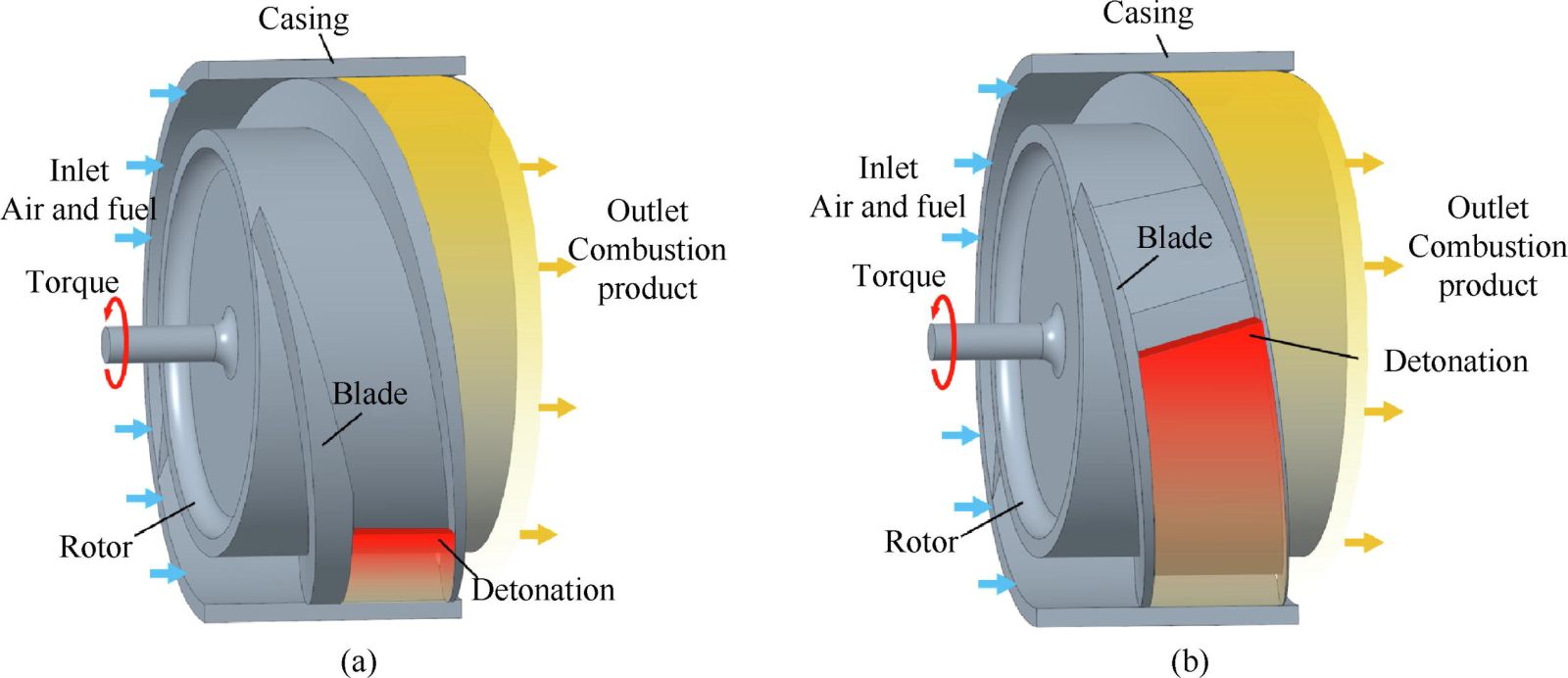This new type of engine pushes the boundaries of supersonic flight ✈️
Published by Cédric,
Article author: Cédric DEPOND
Source: Chinese Journal of Aeronautics
Other Languages: FR, DE, ES, PT
Article author: Cédric DEPOND
Source: Chinese Journal of Aeronautics
Other Languages: FR, DE, ES, PT
Follow us on Google News (click on ☆)

Image Tsinghua University
Since the 1950s, detonation engines have garnered increasing interest in aeronautics. These engines harness the power of supersonic combustion waves to improve energy efficiency. However, their adoption is still hindered by thrust instability and technical constraints that remain insurmountable.
In this context, Tsinghua University in Beijing has announced the Ram-Rotor Detonation Engine (RRDE). By combining a ram-rotor-inspired compressor with a rotating detonation, this engine achieves continuous operation, marking a breakthrough for this type of propulsion.
Its operation is based on a continuous loop: air compressed and mixed with fuel ignites through shock waves, generating constant thrust. This system ensures unique stability, even at speeds reaching up to Mach 4.2, according to tests conducted.
Researchers explain that this engine stands out due to its compact structure and exceptional efficiency. The rotor, equipped with helical blades, optimizes the compression of the air-fuel mixture under ideal conditions for regular detonation, regardless of incoming airflow.

Typical RRDE structures.
(a) Diagram varying blade thickness;
(b) Diagram varying rotor radial dimensions.
Moreover, numerical simulations have confirmed that detonation remains stationary in the proposed configuration. This would allow adaptation to variations in parameters such as airflow rate or fuel richness, thereby ensuring robust performance.
Despite these successes, obstacles remain. Stabilizing detonation waves and managing heat are among the challenges to overcome. Nevertheless, the team views these hurdles as essential steps toward large-scale adoption.
If these efforts come to fruition, the RRDE could become a key solution for supersonic vehicles, opening new horizons in aeronautics and space exploration.
What is a rotating detonation engine?
A rotating detonation engine is a type of engine that uses detonation waves to generate thrust. Unlike conventional combustion engines, it exploits supersonic combustion, where a shock wave moves through an air-fuel mixture, releasing energy efficiently.
In this engine, an annular chamber concentrates the detonation waves, which rotate around a central axis. This rotation maintains continuous combustion, eliminating the cycle interruptions seen in other detonation engines.
Its main advantage lies in the pressure gain, which improves both energy efficiency and thrust. However, its technical complexity, particularly in stabilizing the waves, remains a barrier to widespread adoption.
Rotating detonation engines promise compact and efficient propulsion, paving the way for applications in supersonic and space aviation.